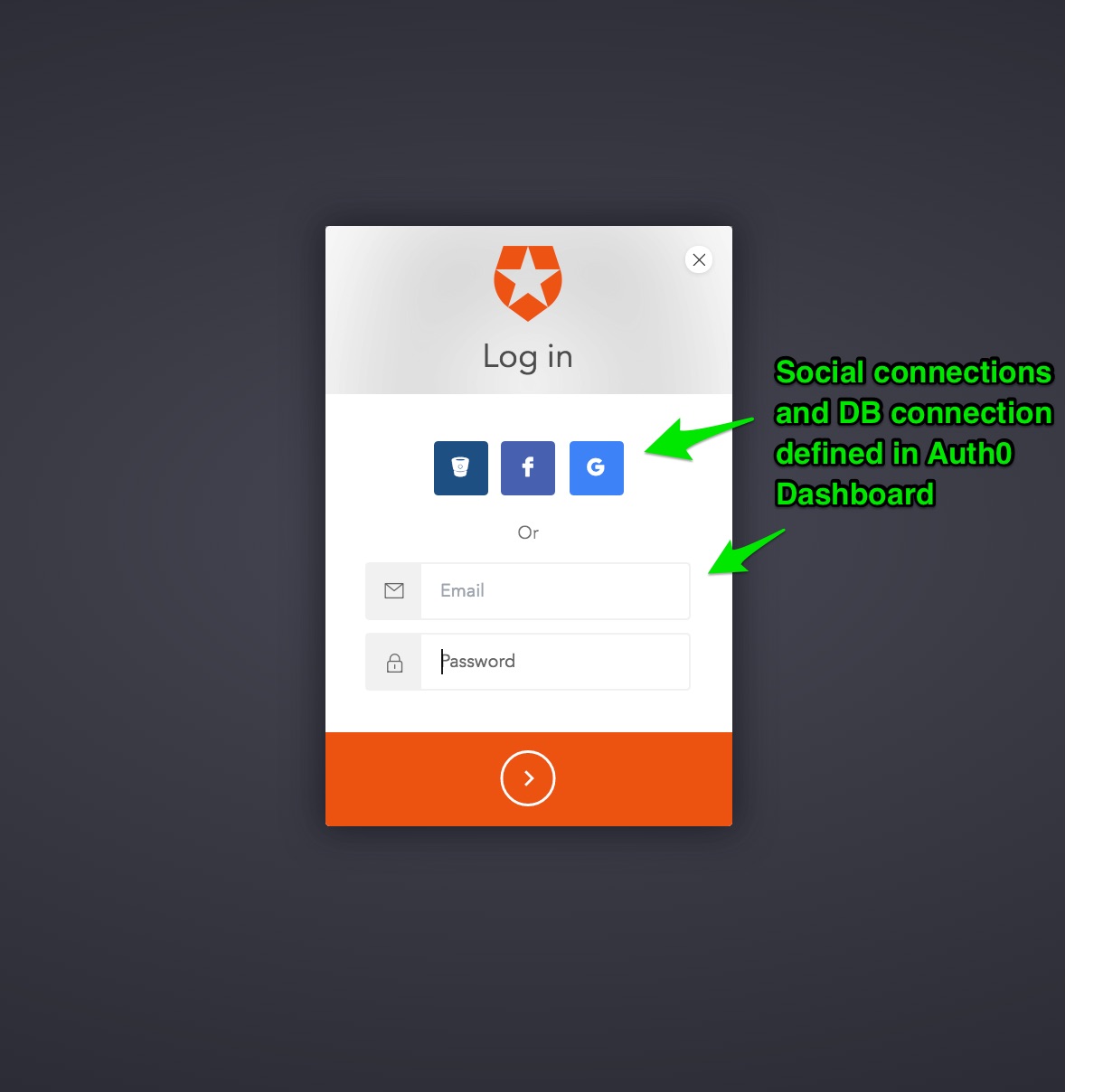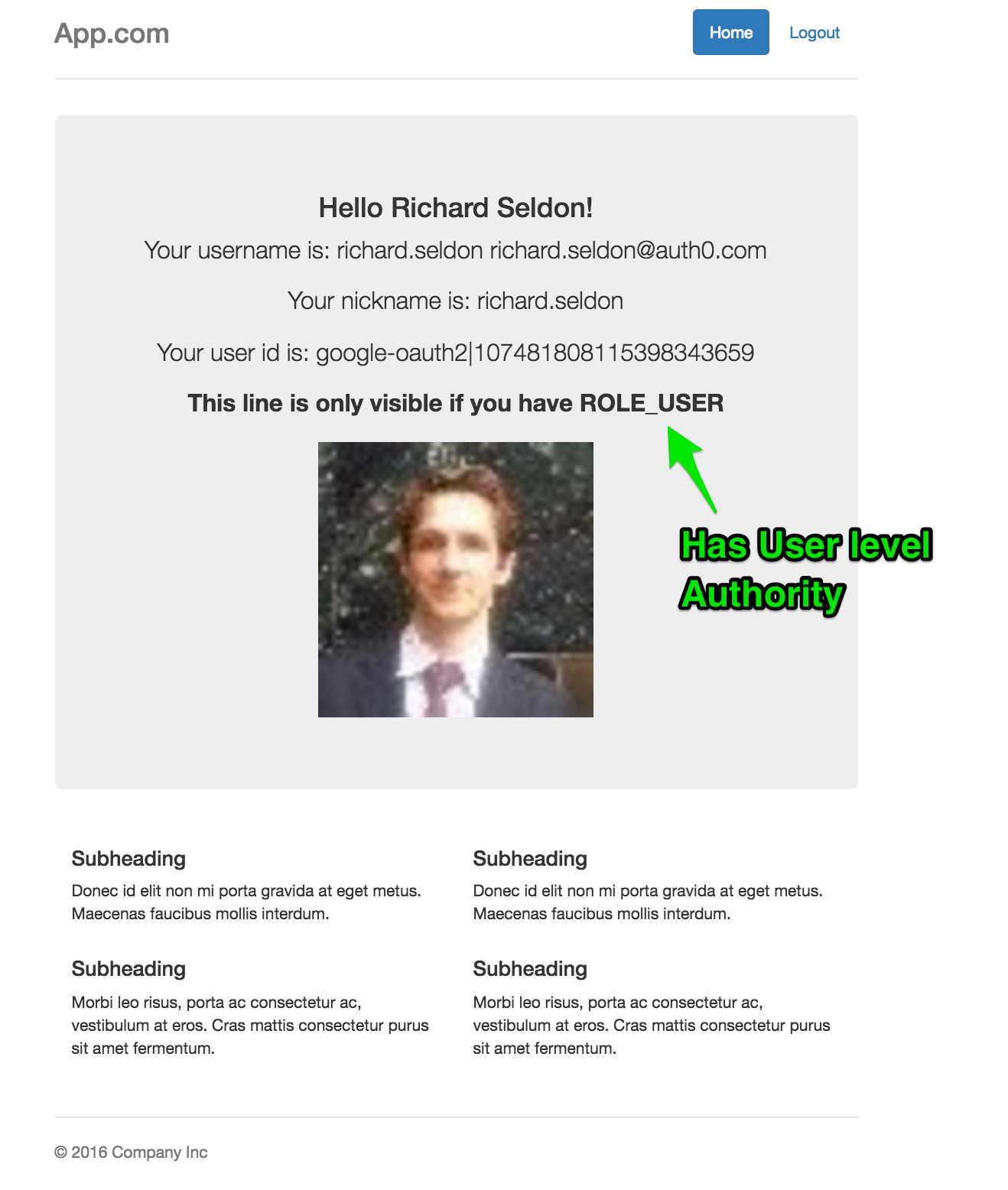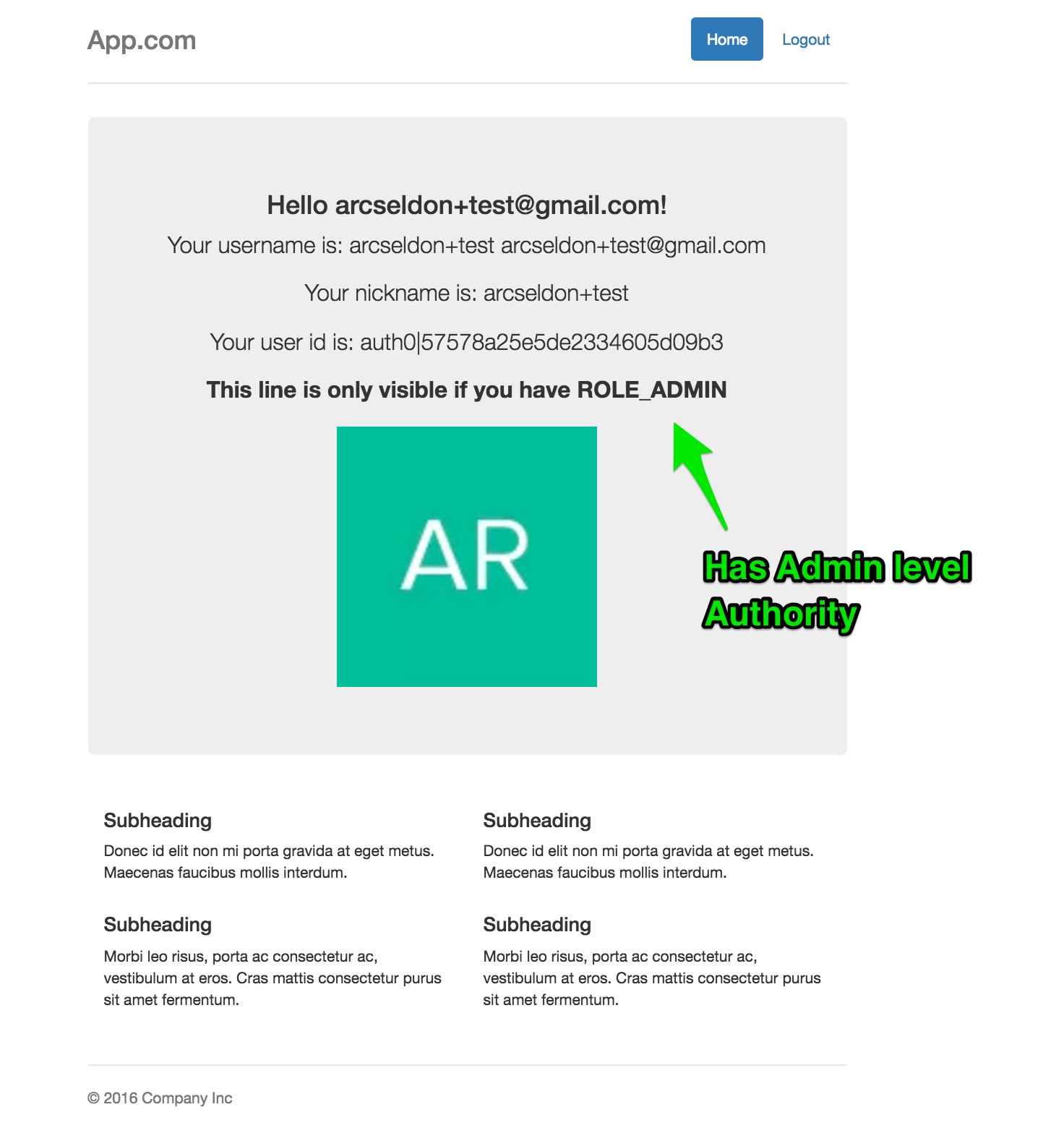Sample application demonstrating Auth0 and spring security integration for a Java Spring MVC application
This is a companion sample for the Auth0 Spring Security MVC library. Please refer to that library and documentation for further information specific to the library itself.
This sample application shows you how to:
- Configure and run Java based Spring application with Auth0 (Lock or Auth0.js) and Spring Security
- 100% Java Configuration (Annotations)
- Secure one or more URL endpoints with Role / Authority based permissions (ROLE_USER, ROLE_ADMIN etc)
- Secure Java Services using method level security annotations for role based access control
- Use Spring Security JSTL tag library to add role level security to your JSP pages.
In addition to this sample for Auth0 and Spring Security integration, if you are additionally interested in having Single Sign-On (SSO) between Java Spring Security configured applications, then please take a look at our auth0-spring-security-mvc-sso-sample
Let's get started - it only takes a few minutes to have a working application with all the above.
In order to run this example you will need to have Java 7+ and Maven installed.
Check that your maven version is 3.0.x or above:
mvn -vCreate an Auth0 Account (if not already done so - free!).
Create an application - for the purposes of this sample - app
Ensure you add the following to the settings.
Allowed Callback URL:
http://localhost:3099/callback
Ensure you add the following to the settings.
Allowed Logout URLs:
http://localhost:3099/logout
Add one or more connections to your application - for instance Google Social Connection,
or username-password DB connection.
Since this sample applies Role based authorization on the Home Page (defaults to requiring ROLE_ADMIN), go to Rules
and create the following new Rule:
function (user, context, callback) {
user.app_metadata = user.app_metadata || {};
// You can add a Role based on what you want
// Here, we simply check domain
var addRolesToUser = function(user, cb) {
if (user.email.indexOf('@gmail.com') > -1) {
cb(null, ['ROLE_ADMIN']);
} else if (user.email.indexOf('@auth0.com') > -1) {
cb(null, ['ROLE_ADMIN']);
} else {
cb(null, ['ROLE_USER']);
}
};
addRolesToUser(user, function(err, roles) {
if (err) {
callback(err);
} else {
user.app_metadata.roles = roles;
auth0.users.updateAppMetadata(user.user_id, user.app_metadata)
.then(function(){
callback(null, user, context);
})
.catch(function(err){
callback(err);
});
}
});
}
In our simple Rule above, we add ROLE_ADMIN to any user profiles whose email addresses are gmail.com and auth0.com domains.
Otherwise, we only provide ROLE_USER role. Our Spring Security Sample app will read this information from the UserProfile and apply
the granted authorities when checking authorization access to secured endpoints configured with Role based permissions
Here is our sample AppConfig entry where we specify the endpoints security settings - defined in AppConfig.java
// Apply the Authentication and Authorization Strategies your application endpoints require
http
.authorizeRequests()
.antMatchers("/css/**", "/fonts/**", "/js/**", "/login").permitAll()
.antMatchers("/portal/**").hasAnyAuthority("ROLE_USER", "ROLE_ADMIN")
// .antMatchers("/portal/**").hasAuthority("ROLE_ADMIN")
.antMatchers(getSecuredRoute()).authenticated();
Here, we only allow users with ROLE_USER or ROLE_ADMIN to access the home page.
Enter your:
auth0.domain, auth0.issuer, auth0.clientId, and auth0.clientSecret information into src/main/resources/auth0.properties.
Note:
auth0.issuer should have the value https://YOUR_DOMAIN.auth0.com/ (the trailing slash is important).
For example, if your auth0.domain is example.auth0.com then auth0.issuer should have value https://example.auth0.com/.
There are two properties in auth0.properties that you do not need to touch. Leave values as false
auth0.servletFilterEnabled: false - this ensures we don't autowire the ServletFilter defined in an Auth0 dependency
library.
auth0.defaultAuth0WebSecurityEnabled: false - this ensures we do not autowire the default configuration file
provided with the auth0-spring-security-mvc library itself. That is a default configuration suitable only for
simpler applications seeking to have an out of the box secured endpoint URL - similar to auth0-servlet library.
For details on the other settings, please check the README for the library this sample depends on Auth0 Spring Security MVC. In particular, this section on defalut configuration which lists each property together with a description on its purpose.
In order to build and run the project execute:
mvn spring-boot:runThen, go to http://localhost:3099/login.
The MIT License (MIT)
Copyright (c) 2013 AUTH10 LLC
Permission is hereby granted, free of charge, to any person obtaining a copy of this software and associated documentation files (the "Software"), to deal in the Software without restriction, including without limitation the rights to use, copy, modify, merge, publish, distribute, sublicense, and/or sell copies of the Software, and to permit persons to whom the Software is furnished to do so, subject to the following conditions:
The above copyright notice and this permission notice shall be included in all copies or substantial portions of the Software.
THE SOFTWARE IS PROVIDED "AS IS", WITHOUT WARRANTY OF ANY KIND, EXPRESS OR IMPLIED, INCLUDING BUT NOT LIMITED TO THE WARRANTIES OF MERCHANTABILITY, FITNESS FOR A PARTICULAR PURPOSE AND NONINFRINGEMENT. IN NO EVENT SHALL THE AUTHORS OR COPYRIGHT HOLDERS BE LIABLE FOR ANY CLAIM, DAMAGES OR OTHER LIABILITY, WHETHER IN AN ACTION OF CONTRACT, TORT OR OTHERWISE, ARISING FROM, OUT OF OR IN CONNECTION WITH THE SOFTWARE OR THE USE OR OTHER DEALINGS IN THE SOFTWARE.


